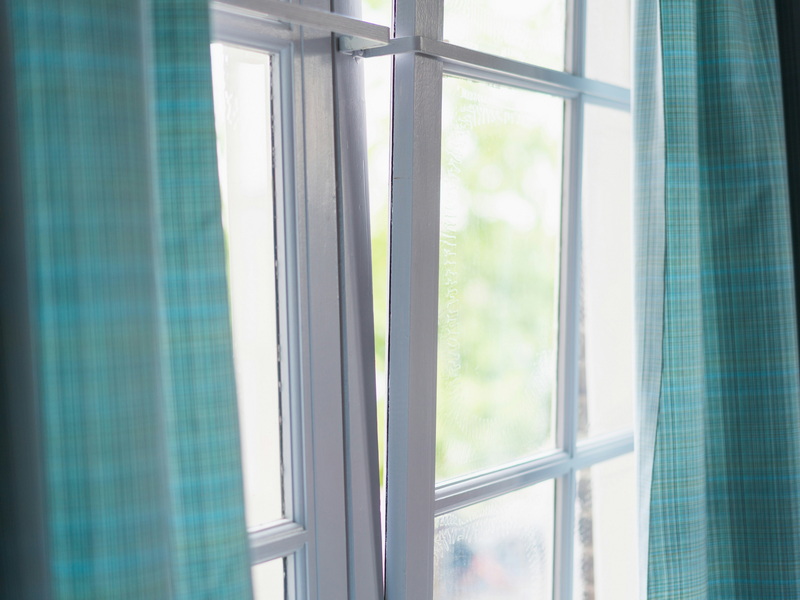English 




Views: 222 Author: Astin Publish Time: 2025-01-20 Origin: Site



Content Menu
● Understanding Heat Transfer Through Windows
>> Reflectivity and Emissivity
● Benefits of Using Aluminum Foil on Windows
>> 4. Protection Against UV Rays
● Potential Drawbacks of Using Aluminum Foil
>> 2. Potential Damage to Windows
● How to Use Aluminum Foil on Windows
>> Step-by-Step Installation Guide
● Alternatives to Aluminum Foil for Window Treatment
>> 4. Outdoor Awnings or Shades
● FAQ
>> 1. Can aluminum foil really keep heat out?
>> 2. Is it safe to use aluminum foil on double-pane windows?
>> 3. How long does aluminum foil last when used on windows?
>> 4. Does covering windows with aluminum foil block natural light?
>> 5. Are there any fire risks associated with using aluminum foil?
As temperatures rise during the summer months, homeowners often seek effective and affordable ways to keep their homes cool. One popular method that has gained traction is using aluminum foil on windows. This article explores the effectiveness of aluminum foil in blocking heat, its installation methods, benefits, potential drawbacks, and alternative solutions.

Windows are typically poor insulators, allowing heat to enter homes through conduction and radiation. When sunlight hits a window, it passes through the glass and transforms into thermal energy, raising indoor temperatures. This phenomenon can lead to increased reliance on air conditioning systems, resulting in higher energy bills.
1. Conduction: This is the transfer of heat through direct contact. For example, when the sun heats the window glass, that heat can be conducted into the room.
2. Convection: This involves the movement of heat through fluids (liquids or gases). Warm air rises and cool air sinks, creating air currents that can affect indoor temperatures.
3. Radiation: This is the transfer of heat in the form of electromagnetic waves. Sunlight is a primary source of radiant heat that enters homes through windows.
Aluminum foil is known for its excellent reflective properties; it can reflect up to 95-98% of radiant heat when applied correctly. When sunlight strikes a window covered with aluminum foil, most of that energy is reflected away from the home rather than being absorbed by the glass and subsequently heating up the interior space.
- Reflectivity: Aluminum foil reflects a significant portion of radiant heat away from its surface. The shiny side is particularly effective at bouncing back solar radiation.
- Emissivity: This refers to how well a material emits thermal radiation. Aluminum foil has low emissivity, meaning it does not absorb much heat; instead, it reflects it.
Using aluminum foil on windows offers several advantages:
Aluminum foil is inexpensive and readily available at most grocery stores. This makes it an accessible option for many homeowners looking to save on cooling costs during hot weather.
Applying aluminum foil is straightforward; it can be cut to size and affixed using tape or other adhesives. This makes it a quick DIY project that anyone can undertake.
By reflecting heat away from living spaces, aluminum foil helps maintain a comfortable indoor temperature, leading to reduced energy consumption and lower utility bills.
Aluminum foil can block harmful ultraviolet (UV) rays that can fade furniture and flooring, providing an added layer of protection for interior spaces.
Foil can be easily removed once the heat wave passes, making it a flexible option for seasonal use.

While there are numerous benefits to using aluminum foil on windows, there are also some potential drawbacks:
Covering windows with aluminum foil may not be visually appealing. The shiny surface can create an unconventional look that some homeowners may find unappealing or embarrassing.
If placed on the inside of windows instead of the outside, aluminum foil can trap heat between the glass and itself. This buildup may lead to overheating and potential cracking of the glass due to thermal stress.
Regular kitchen-grade aluminum foil is relatively thin and may tear or develop holes over time, especially if exposed to wind or rain. This means it may need frequent replacement during extended periods of use.
While effective in blocking sunlight, aluminum foil does not provide insulation against heat loss during colder months. Therefore, it should not be relied upon as a year-round solution for temperature control.
To maximize the benefits of aluminum foil on windows while minimizing potential drawbacks, consider these best practices:
1. Choose Quality Aluminum Foil: Opt for heavy-duty aluminum foil instead of standard kitchen-grade foil for better durability and insulation properties.
2. Measure Your Windows: Measure each window accurately to determine how much aluminum foil you will need.
3. Cut to Size: Cut pieces of aluminum foil slightly larger than your window dimensions so that you have enough material to secure it in place.
4. Apply Aluminum Foil:
- For optimal results, apply the shiny side facing outward if placing it outside.
- If applying inside (less effective), ensure that it covers all areas without gaps.
- Use tape or adhesive along the edges to secure it firmly.
5. Monitor Performance: After installation, monitor indoor temperatures over several days to assess effectiveness.
If you find that using aluminum foil is not suitable for your needs or preferences, there are several alternatives available:
These films are designed specifically for windows and provide similar reflective properties without compromising visibility or aesthetics.
Investing in quality blackout curtains can provide effective light blocking without compromising aesthetics or risking damage to your windows.
Cellular shades are designed with air pockets that provide excellent insulation while also blocking light effectively.
Installing outdoor awnings over windows provides shade from direct sunlight without obstructing views while keeping your home cooler during hot weather.
Using aluminum foil on windows is an effective method for reducing indoor heat during high-temperature periods. Its high reflectivity helps bounce back radiant heat before it enters your home, making it a practical solution for many homeowners seeking relief from soaring temperatures without significant financial investment.
This simple yet effective strategy not only enhances comfort but also promotes energy efficiency and environmental responsibility by reducing reliance on air conditioning systems during peak summer months.

Yes, aluminum foil effectively reflects radiant heat away from your home when applied correctly, especially if placed on the outside of windows.
You can use aluminum foil on double-pane windows; however, be cautious about applying it internally as it may trap heat between the panes and cause damage.
Aluminum foil can last several weeks to months depending on weather conditions; however, it may need replacement if it develops holes or tears.
Yes, covering windows with aluminum foil will block natural light from entering your home completely, creating a darker environment indoors.
There is minimal fire risk if used correctly; however, ensure that it does not come into contact with any heat sources or electrical fixtures.
[1] https://www.weiye-aluminium.com/does-aluminum-foil-on-windows-keep-heat-out.html
[2] https://www.gm-cx.com/does-putting-aluminum-foil-on-windows-help.html
[3] https://www.youtube.com/watch?v=UDcvB5selMQ
[4] https://www.weiye-aluminium.com/why-do-people-put-aluminum-foil-on-windows.html
[5] https://alfipa.com/articles/insulation-with-aluminium-foils/
[6] https://sustainabilityscout.com/how-to-save-energy-with-window-treatments/
[7] https://www.gm-cx.com/does-aluminum-foil-keep-heat-out-of-windows.html
[8] https://www.kingchuanpackaging.com/exploring-aluminum-foil-unexpected-uses-health-effects-and-suggestions-for-reducing-harm/
[9] https://www.reddit.com/r/DIY/comments/14xf1nx/would_it_be_bad_if_i_covered_my_window_with/
[10] https://www.housedigest.com/1360647/aluminum-foil-lining-windows-mistake/
[11] https://www.youtube.com/watch?v=ac19L5iPnZE
[12] https://www.tomsguide.com/opinion/i-just-beat-the-heat-with-a-dollar2-roll-of-aluminum-foil-heres-how
[13] https://www.tiktok.com/discover/aluminum-foil-on-windows-to-block-sunlight
[14] https://www.reddit.com/r/Austin/comments/14fj1e6/psa_aluminum_foil_in_your_windows_decreases_the/
[15] https://www.pinterest.com/pin/why-do-people-put-foil-on-their-windows--801148221223174214/
Top Aluminum Furnitures Manufacturers and Suppliers in Czech Republic
Top Aluminum Furnitures Manufacturers and Suppliers in Poland
Top Aluminum Furnitures Manufacturers and Suppliers in Belgium
Top Aluminum Furnitures Manufacturers and Suppliers in Finland
Top Aluminum Furnitures Manufacturers and Suppliers in Denmark
Top Aluminum Furnitures Manufacturers and Suppliers in Greece
Top Aluminum Furnitures Manufacturers and Suppliers in Portugal
Top Aluminum Furnitures Manufacturers and Suppliers in Austria
Top Aluminum Furnitures Manufacturers and Suppliers in Norway
Top Aluminum Furnitures Manufacturers and Suppliers in Sweden
